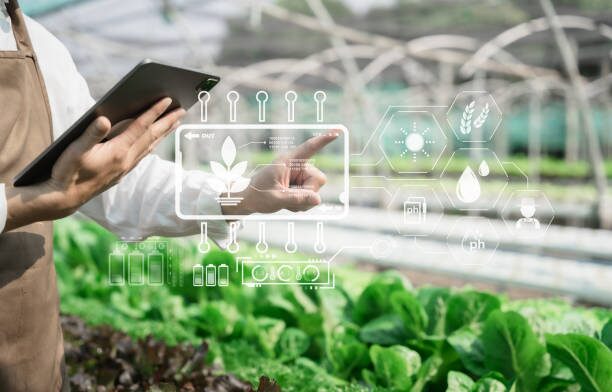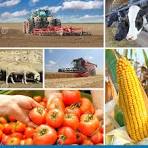
Introduction
Imagine a world where farmers can predict weather changes, monitor soil health in real-time, and optimize water usage—all with the help of technology. Sounds futuristic, right? Well, welcome to the era of smart farming! In this article, we’ll dive into the fascinating world of smart farming solutions, exploring how they are revolutionizing agriculture and paving the way for sustainable practices. Grab a cup of coffee, and let’s get started!
What is Smart Farming?
Smart farming, also known as precision agriculture, leverages cutting-edge technologies to optimize farming practices. From drones and IoT devices to artificial intelligence (AI) and big data, these innovations aim to increase productivity while reducing environmental impact. Think of it as farming on autopilot—but smarter!
How Does Smart Farming Work?
Smart farming combines real-time data collection, advanced analytics, and automated systems to manage and monitor agricultural activities. By integrating technology into traditional farming, it enables farmers to make data-driven decisions that boost efficiency and reduce waste.
Key Features of Smart Farming
- Automation: Robots and automated machinery perform repetitive tasks like planting and harvesting.
- Data Insights: Advanced sensors and analytics tools provide actionable insights into crop health, soil quality, and weather patterns.
- Remote Monitoring: Farmers can track their fields from anywhere using mobile apps or computer dashboards.
Why is Sustainable Agriculture Important?

Before diving deeper, let’s address the big question: why does agriculture need to be sustainable? The answer lies in balancing food production with environmental conservation. With the global population set to reach 9.7 billion by 2050, traditional farming methods alone can’t keep up. Enter sustainable agriculture—a practice that ensures long-term productivity without depleting natural resources.
The Challenges in Traditional Farming
- Resource Overuse: Excessive use of water and fertilizers.
- Climate Change: Unpredictable weather patterns disrupting yields.
- Soil Degradation: Loss of soil fertility due to over-farming.
Benefits of Sustainable Agriculture
Sustainable agriculture focuses on maintaining ecological balance while meeting human needs. Benefits include:
- Improved soil health.
- Reduced carbon footprint.
- Enhanced biodiversity.
- Long-term productivity.
Core Components of Smart Farming

Let’s break down the key elements that make smart farming possible:
1. Internet of Things (IoT) in Agriculture
IoT devices collect and transmit data from the field, providing real-time insights into soil moisture, temperature, and crop health.
- Example: Smart sensors monitor irrigation needs, ensuring water efficiency.
- Benefit: Saves water and prevents over-irrigation.
2. Artificial Intelligence (AI) and Machine Learning (ML)
AI-driven systems analyze data to predict outcomes and recommend actions.
- Example: AI algorithms forecast pest outbreaks and suggest preventive measures.
- Benefit: Reduces reliance on chemical pesticides.
3. Drones and Satellite Imagery
Drones and satellites provide high-resolution images to monitor large fields.
- Example: Drones detect crop stress, allowing targeted interventions.
- Benefit: Cuts costs by focusing resources where they’re needed most.
4. Big Data Analytics
Big data tools process vast amounts of agricultural data to uncover trends and patterns.
- Example: Analyzing historical weather data to plan planting schedules.
- Benefit: Increases yield predictability.
5. Robotics and Automation
Robotic systems perform repetitive tasks like planting, weeding, and harvesting.
- Example: Autonomous tractors plow fields with precision.
- Benefit: Boosts efficiency and reduces labor costs.
6. Blockchain for Traceability
Blockchain technology ensures transparency and traceability in the food supply chain.
- Example: Tracking the journey of produce from farm to table.
- Benefit: Builds consumer trust and ensures quality control.
How Smart Farming Promotes Sustainability

Now that we’ve covered the tech side, let’s connect the dots to sustainability.
1. Water Conservation
Smart irrigation systems ensure crops get just the right amount of water.
- Impact: Reduces water wastage by up to 50%.
2. Reduced Chemical Use
Precision farming minimizes the use of fertilizers and pesticides.
- Impact: Lowers soil and water contamination.
3. Soil Health Management
Real-time soil monitoring helps maintain nutrient levels.
- Impact: Prevents soil erosion and degradation.
4. Lower Carbon Footprint
Automation and efficient resource use decrease greenhouse gas emissions.
- Impact: Promotes climate-friendly farming.
5. Enhanced Biodiversity
By reducing chemical use and optimizing land management, smart farming fosters a more diverse ecosystem.
Real-World Examples of Smart Farming Solutions

Case Study 1: John Deere’s Precision Ag Technology
John Deere’s GPS-enabled tractors and AI systems help farmers optimize planting and harvesting.
- Result: Increased yields and reduced fuel consumption.
Case Study 2: Blue River Technology’s See & Spray
This AI-powered system identifies weeds and applies herbicides only where needed.
- Result: 90% reduction in chemical usage.
Case Study 3: FarmBot
FarmBot is an open-source robotic farming solution for small-scale growers.
- Result: Encourages sustainable home gardening.
Case Study 4: CropX Soil Monitoring
CropX uses IoT sensors to provide detailed soil analytics.
- Result: Improved water and nutrient management for farmers worldwide.
Challenges in Adopting Smart Farming
Despite its benefits, smart farming isn’t without hurdles.
1. High Initial Costs
The technology can be expensive, making it less accessible for small farmers.
2. Lack of Technical Expertise
Farmers need training to operate advanced systems effectively.
3. Connectivity Issues
Rural areas often lack the robust internet infrastructure needed for IoT devices.
4. Data Privacy Concerns
The collection of large amounts of data raises concerns about how it’s stored and used.
5. Resistance to Change
Traditional farmers may be hesitant to adopt new technologies.
The Future of Smart Farming
The future looks promising, with ongoing innovations aiming to make smart farming more accessible and affordable. AI-driven decision support systems, blockchain for traceability, and 5G connectivity are just the tip of the iceberg.
Emerging Trends
- Vertical Farming: Growing crops in vertically stacked layers to save space.
- Climate-Resilient Crops: Using genetic engineering to create crops that can withstand extreme weather conditions.
- Augmented Reality (AR): AR tools for training farmers and visualizing data.
Government Initiatives
Many governments are offering subsidies and incentives to encourage the adoption of smart farming technologies. These efforts aim to bridge the gap between technology and traditional farming practices.
READ ALSO:
- DIY Smart Streetlight Powered by Footstep Energy | Arduino & ESP-01 Explained!
- Implementing IoT and AI for Integrated Farm Management Systems
- AI-Driven Market Analysis for Predicting Crop Demand Trends
- Smart Farming Practices for Enhancing Pollination Efficiency
How Can Farmers Get Started?
If you’re a farmer curious about smart farming, here’s how you can start:
- Assess Your Needs: Identify areas where technology can help.
- Start Small: Invest in basic tools like soil sensors or a drone.
- Seek Expert Advice: Consult agritech companies for tailored solutions.
- Join Training Programs: Enroll in workshops or online courses to understand the technology better.
- Collaborate with Others: Partner with local cooperatives or organizations to share resources and knowledge.
FAQs
1. What is smart farming?
Smart farming uses technologies like IoT, AI, and drones to optimize agricultural practices and increase efficiency.
2. How does smart farming promote sustainability?
By conserving resources, reducing chemical use, and lowering carbon emissions, smart farming supports eco-friendly agriculture.
3. Are smart farming technologies expensive?
While initial costs can be high, many solutions offer long-term savings through increased efficiency and productivity.
4. What are the challenges in adopting smart farming?
Key challenges include high costs, technical expertise requirements, and connectivity issues in rural areas.
5. Can small-scale farmers benefit from smart farming?
Absolutely! Affordable tools like soil sensors and open-source solutions like FarmBot make smart farming accessible to small farmers.


